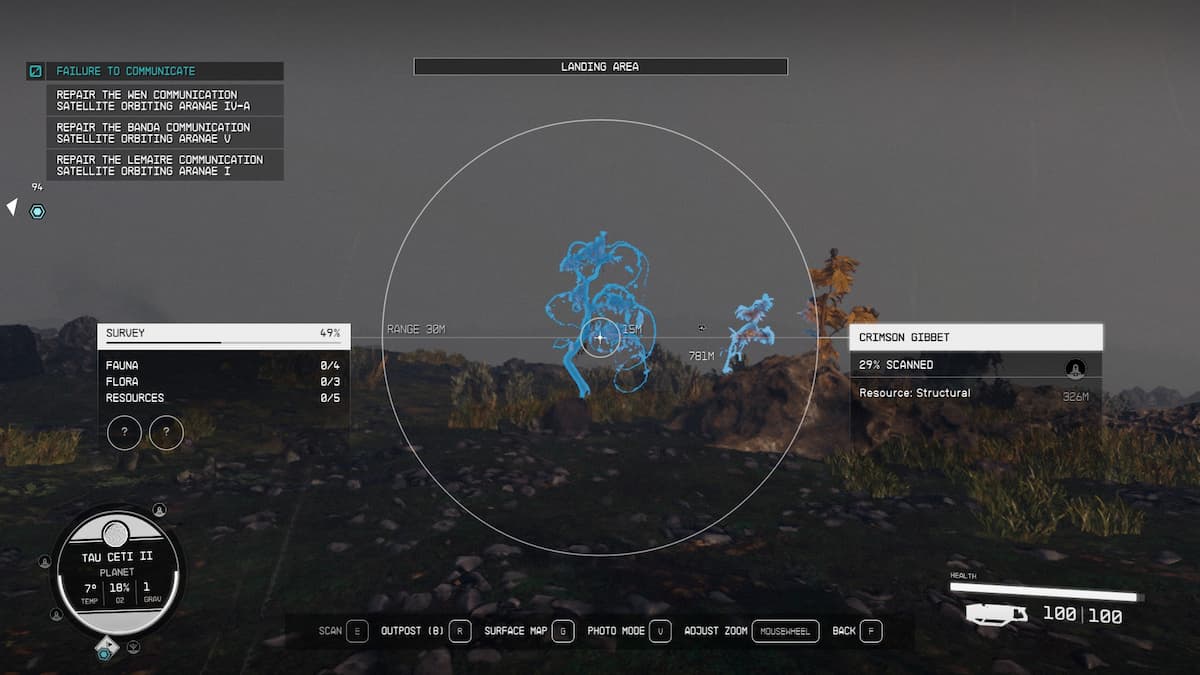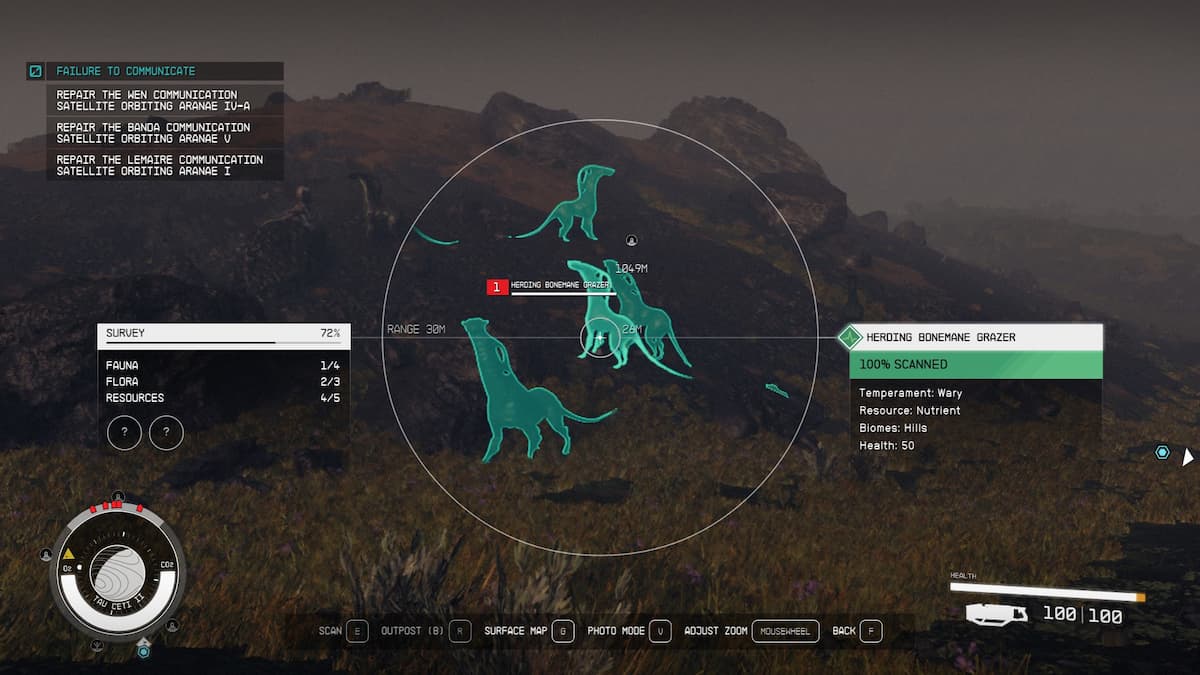Exploring planets and registering the native species you find is a key piece of gameplay in Starfield. To do so, you need to scan the various plants and animals you encounter. While it seems like an easy enough task, it’s a bit more complex than it first appears and is required to complete planet surveys and receive survey slates. Here’s how to scan the flora and fauna in Starfield.
How to Scan Flora and Fauna in Starfield
Unlike other space exploration games, such as No Man’s Sky, Starfield requires you to do multiple scans of a single plant or animal before it can be registered as discovered.
- To do this, bring up your scanner by pressing LB on controller or “F” on keyboard.
- You then highlight the flora or fauna you want to collect and press “A” on controller or “E” on keyboard.
- Items already scanned will be fully shaded in, while those you can still gather data from will only have a colored outline.
Get the Surveying Skill
Initially, your scanning distance is only 10 meters. As you level up and get more skill points, you can unlock the Surveying skill. As you level that skill, you’ll increase the distance at which you can scan a sample. You’ll also gather more information per scan, which means you’ll need to scan fewer plants and animals to fully discover them.
Related: Starfield‘s Universal and Local Times Explained

How to Find Flora and Fauna to Scan
When using the scanner, stay on the lookout for flora and fauna that are highlighted in blue. Blue means the target hasn’t been registered yet. When hovering over a plant, for example, the scanner will show you how much of the plant’s data has already been found. The same goes for animals. You’ll also see a list of the information that’s been obtained, such as the resources you can gather, if you can grow it in your outpost, what biomes it’s found in, and more.
Scanning creatures can be a bit trickier due to their volatile nature. Hostile creatures will have a red symbol next to the species name, while more docile ones will be in green. Don’t worry if you get attacked and have to defend yourself, though. Creatures you kill are automatically scanned. Those you find already dead can be scanned, as well. Plus, you get to harvest items from them.
Flying and Swimming Fauna
There are certain exceptions to the scanner distance rules when it comes to animals that fly or are found in the ocean. Flying animals can be scanned as soon as they appear with the colored outline. You always want to look up, especially if you’re missing a single fauna species for a planetary survey.
Sea creatures are a little harder. You’ll often know that the planet you’re on has these if the only biome missing a creature is Coastal or Swamp. Water creatures have a low spawn chance, but can show up in the ocean, rivers, lakes, or puddles found in swamps. Sometimes the easiest way to scan these is to use a long range gun and kill the ones that are there, wait for a new spawn, and repeat until the scan is complete.
Since there are no directional notations on the UI, it can be difficult to locate the ocean when trying to find these animals. What you want to do is go to the planet map, not the one the surface map, but the one from space that depicts resource locations. Zoom in and then place your own waypoint marker in the ocean. That’ll show up on the UI and you can follow it right to water.
Zoology and Botany Skill
Along with the Surveying skill, you want to level up your Zoology and Botany skills. Each of them allows rarer resources to be collected, which is great. The key here is that each upgrade gives more information per scan. This further reduces the number of subjects you need to hunt for to fully register a species of flora and fauna.
How to Tally and Add Flora and Fauna to a Planet Survey

When you’ve scanned a target to 100%, all members of that species will turn green when shown in the scanner. The tracker on the left side of the scanner will also increase by one, noting that you’ve registered that species of flora or fauna for the planet survey. The information that appears in the scanner will have a green banner, as well.
If all flora or fauna that live in a biome are found, you’ll see a green notation proclaiming the Biome Complete. This means you must go back to space and relocate to a different area. You can see which biome you’re currently in by looking at your selected landing zone information on the right side of the screen. Clicking a different area on the planet will show new biomes and how much of those biomes remains. Complete a planet survey, and you’ll get a survey slate to sell.
That’s how to scan flora and fauna in Starfield. For more on completing a planetary survey, the different skills, or how to complete quests, fly through our Starfield guides archives.







Published: Sep 21, 2023 10:16 am